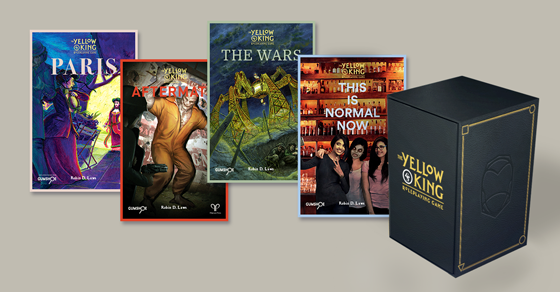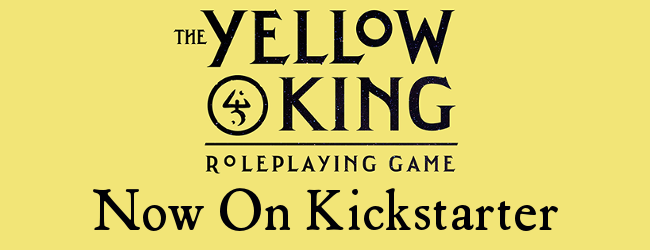News, Yellow King Roleplaying Game
The Basics of Shock and Injury Cards in The Yellow King RPG
As those who’ve read the preview draft of the Yellow King Roleplaying Game (available to all backers of its Kickstarter) already know, its iteration of GUMSHOE takes a new approach to the emotional and physical wounds horror characters suffer in the course of their exploits.
When something debilitating happens to your character you receive Shock cards, which result from mental hazards, or Injury cards, which you can get either when attacked in combat, or when you wind up on the wrong side of other sources of physical harm: fire, artillery shells, falls from balconies and the like.
When you receive either a third Shock card or a third Injury card, your character is either dead or otherwise irreparably damaged and out of the game.
You can however have 1 Shock card and 2 Injuries or vice versa and still continue.
So instead of losing a resource you want to hold onto (like hit points, or Health and Stability in other GUMSHOE games), you’re getting stuck with a thing you want to get rid of.
Whether you’re engaged in a fight or dodging harm by making Composure, Health or Athletics tests, these cards come in pairs: Minor and Major.
If you do poorly in a fight, you will get the Major Injury your foe deals out, unless you pay a toll of pool points keyed to the foe’s relative strength. Then you get a Minor Injury card.
When you do well in a fight, you might still get nicked—taking a Minor Injury unless you pay the toll.
Here are the Minor and Major cards you might wind up with after a fight with violent fellow students—an all too common problem in 1895 Paris.

(Note: prototype only. Ace graphic designer Christian Knutsson’s final versions will look much better than mine.)
Against an impersonal hazard or mentally stressful situation, you take a Minor Injury if you fail the test by 2 or less, or a Major card when you fail by more than 2.
Here’s the Minor and Major cards you might take after failing the Composure test that comes when, for the first time in your life, someone tries to murder you:

The text of a card probably imposes some sort of negative consequence on your character. Although just having a card is bad, because you’re one step closer to some sort of doom.
The card often, but not always, includes a discard condition, telling you what you have to do to get rid of it. Sometimes it requires you to do something on the mechanical side, like receive a successful First Aid test performed by another player, or score a failure on another test in the future. Or it can require you to do something in the story: punch somebody, go indulge in a vice, or kill the creature who did this to you.
A card without a discard condition leaves your hand only at the end of the scenario.
When a Shock or Injury changes you permanently, possibly irrevocably, it becomes a Continuity card. Until you somehow discard it, it stays with you from one scenario to the next.
And those are your basics. Just those few elements allow for a huge range of possibilities and surprises in play.
At this moment the stretch goal up for grabs on the Kickstarter is for Card Design Workshop, a section in the GM advice chapter of This is Normal Now that will help you design new cards from these basics.
In a future post or two I’ll go into some examples in detail, unveiling some of my favorite cards—including ones that will be new even to careful perusers of the current preview draft.
Avoid the shocking injury of missing the Kickstarter for The Yellow King Roleplaying Game!





